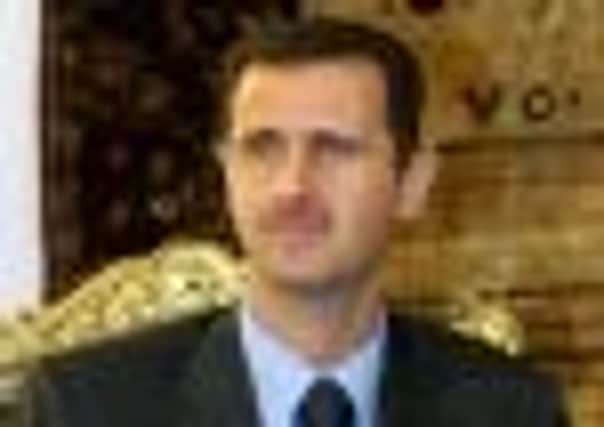Syrian city close to civil war in dark vision of protest’s future


Since the start of the uprising in March, Homs has stood as one of Syria’s most contested cities, its youth among the best organised and most tenacious. But across the political spectrum, residents speak of a decisive shift in past weeks, as a largely peaceful uprising gives way to a struggle that has made Homs violent, fearful and determined.
In the targeted killings, the rival security checkpoints and the hardening of sectarian sentiments, the city offers a dark vision that could foretell the future of Syria’s uprising as both the government and the opposition ready themselves for a protracted struggle over the endurance of a four-decade dictatorship.
Advertisement
Hide AdAdvertisement
Hide Ad“We are done with the protesting phase,” said a 21-year-old engineering student in Homs who spoke on the condition of anonymity. “We’ve now entered a more important phase.”
Homs is a microcosm of Syria, with a Sunni Muslim majority and minorities of Christians and Alawites, a Shiite Muslim sect from which President Bashar al-Assad draws much of his leadership.
Six months of protests and crackdown have frayed ties among the communities.
An armed opposition is battling security forces in the most restive districts. Insurgents have tried to protect the same peaceful protesters that the government has relentlessly sought to arrest. Tension has grown so dire that members of one sect are reluctant to travel to areas populated by other sects. Men in some parts of the city openly carry weapons.
Perhaps the most dramatic facet of the struggle is a series of assassinations in the past week that have left nearly a dozen professors, doctors and informers dead.
One of those killed was Dr Hassan Eid, chief of thoracic surgery at the National Hospital in Homs, and an Alawite from Al Zuhra, one of a handful of districts where his sect makes up a majority and where buildings and streets are still plastered with the portraits of Assad. He was shot to death in front of his house as he headed off to work, residents said.
Al Ouruba, a government-aligned newspaper, called him a “symbol of dedication” and said he treated victims of the violence “without discriminating between any of them.” But in Sunni Muslim areas, residents called him a government informer who helped security forces detain the wounded who were treated at his facility.
“He was responsible for the death of many young men,” said a 65-year-old resident of Homs, who gave his name as Rajab. “He was killed because he deserved it.”
Advertisement
Hide AdAdvertisement
Hide Ad“The guys were aware of him a long time ago,” said an activist in his late 40s who gave his name as Abu Ghali. “But now it’s different. He kept reporting, so they had to kill him. I don’t think he died right away though.”
The killings took place during two bloody days. Residents said three Alawite teachers were killed at a school. In the afternoon, Mohammed Ali Akil, an assistant dean at Al Baath University in Homs, was found dead in his car.
Students said he had shown support for the uprising and criticised Assad’s leadership. “It is true that we were scared during your lectures, but you were a wonderful professor,” a student posted on Facebook.
“One side kills an Alawite, the other kills a Sunni,” a 46-year-old activist said.